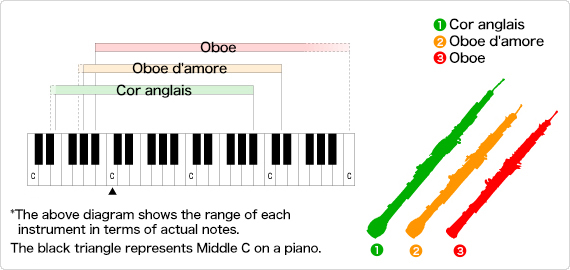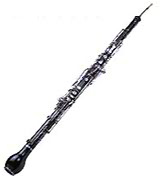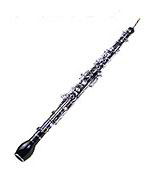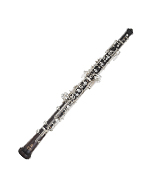The Origins of the Oboe
Instruments related to the oboe
What are the relatives of the oboe?
The oboe is a C woodwind, that is, a C major instrument. A lower pitched instrument is the A woodwind, the oboe d'amore, which is pitched in A major. Even lower is the F woodwind, the cor anglais (also known as the English horn), pitched in F major. Those are just two of the relatives of the oboe.
Unlike the oboe bell, the bells of the oboe d'amore and the cor anglais are egg-shaped. People tend to think that the peculiar, muffled sound comes from the egg shape. However, there is a greater relationship with the different tapering of the widths of the interior pipes.
Oboe family instrument ranges

Listen to the sounds of the oboe family!
Listen to and compare the different sounds of instruments from the oboe-family.
The song being played on the cor anglais is the famous melody to "Goin' Home," taken from the second movement of Dvořák's New World Symphony. The oboe d'amore piece is from Ravel's Boléro. The oboe piece is Johann Sabastian Bach's "Jesu, Joy of Man's Desiring."
The sound of a cor anglais.

The sound of an oboe d'amore.

The sound of an oboe.

The bass oboe, which exists for a single suite
There is also a bass oboe, which produces the lowest sound of any instrument in the oboe family. However, this instrument is rarely encountered. Only a few dozen exist in Japan, and only a few are thought to be produced per year worldwide.
The reason why bass oboes continue to be manufactured is that they appear in Holst's musical suite The Planets. Otherwise, the bass oboe is so rarely used that it could even be said to exist virtually only for a single work.
Musical Instrument Guide:Oboe Contents
Structure
How to Play
How the Instrument is Made
Choosing an Instrument
Trivia
- Why does the oboe lead the orchestra in tuning?
- Do the reeds have a front and a back?
- The keys recoil via springs!
- This is how the oboe and the cor anglais differ
- The charumera was the oboe's cousin
- You can reduce time spent breathing using circular-breathing techniques?
- The Wiener oboe that survived an existential crisis
- Oboe masterpieces: concertos
- Oboe masterpieces: chamber music
- What is the alto oboe?
- The heckelphone, which resembles the oboe
- The oboe is the bassoon's cousin
